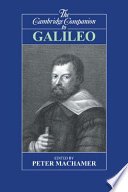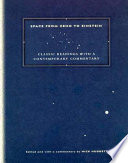 | Peter Machamer - Biography & Autobiography - 1998 - 474 pages
...which that force is impress'd. Law III. To every Action there is always opposed an equal Reaction: or the mutual actions of two bodies upon each other are always equal, and directed to contrary parts.10 The first law, the principle of inertia, connotes several sets of problems. There... | |
 | Roberto Torretti - Philosophy - 1999 - 532 pages
...which that force is impressed. LAW III. To an action there is always a contrary and equal reaction; or, the mutual actions of two bodies upon each other are always equal and directed to contrary parts. (Truesdell 1968, pp. 88-89; cf. Newton 1726, pp. 13-14) Except for the "unless"... | |
 | Richard K. Cooper, Claudio Pellegrini - Mathematics - 1999 - 360 pages
...which the force is impressed. • Law III. To every action there is always opposed an equal reaction: or, the mutual actions of two bodies upon each other are always equal and directed to contrary parts. The concise way in which to express the first two laws is to write the equation... | |
 | Andrew E. Chubykalo, Pope, Viv, Roman Smirnov-Rueda - Quantum electrodynamics - 1999 - 476 pages
...the Principle this law is stated thus: "To every action there is always opposed an equal reaction: or, the mutual actions of two bodies upon each other are always equal, and directed to contrary parts." Newton illustrates the application of this law with the example of a finger pressing... | |
 | Alphonso Hendricks, Loganathan Subramony, Charmaine Van Blerk - Science - 2000 - 444 pages
...you. This is what Newton says about that. 'To every action there is always opposed an equal reaction: or the mutual actions of two bodies upon each other are always equal, and directed to contrary parts' (Hecht, 1994: 109). Or, 'Forces result from the mutual interaction of bodies and... | |
 | Jeanne Fahnestock - Figures of speech - 1999 - 249 pages
...mechanics as Newton's Third Law of Motion. To every action there is always opposed an equal reaction: or, the mutual actions of two bodies upon each other are always equal, and directed to contrary parts. Newton did not express his law in an antimetabole. If anything, the figure polyptoton... | |
 | Nick Huggett - Philosophy - 1999 - 292 pages
...from the determination of both. Law III To every action there is always opposed an equal reaction: or, the mutual actions of two bodies upon each other are always equal, and directed to contrary parts. draw the horse as much towards the stone as it does the stone towards the horse,... | |
 | Wolfgang Hofkirchner - Business & Economics - 1999 - 642 pages
...instance, the third law of motion stated as: "To every action there is always opposed an equal reaction or, the mutual actions of two bodies upon each other are always equal, and directed to contrary parts." (Newton, 1687). The qualification "always" appeared twice in the statement is about... | |
 | Maria Teresa Cabré - Language Arts & Disciplines - 1999 - 264 pages
...terminology used and how the text is expressed. To every action there is always opposed an equal reaction: or, the mutual actions of two bodies upon each other are always equal, and directed to contrary parts. Whatever draws or presses another is as much drawn or pressed by that other. If... | |
 | Max Jammer - Science - 1999 - 290 pages
...which that force is impressed. Law III: To every action there is always opposed an equal reaction; or, the mutual actions of two bodies upon each other are always equal, and directed to contrary parts.17 The first two laws of motion, which Newton credits to Galileo and Huygens, add... | |
| |